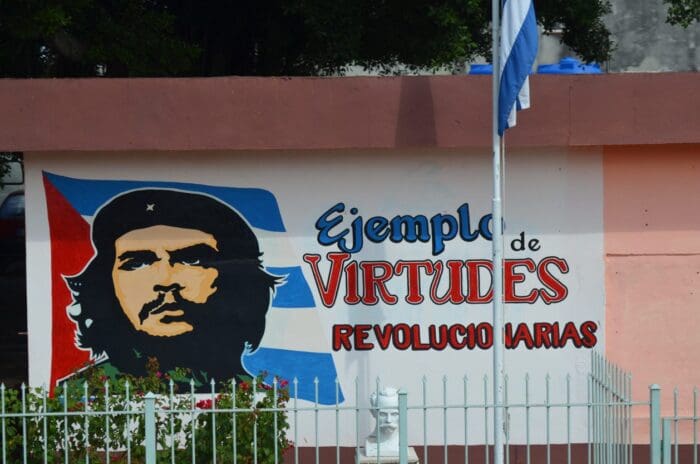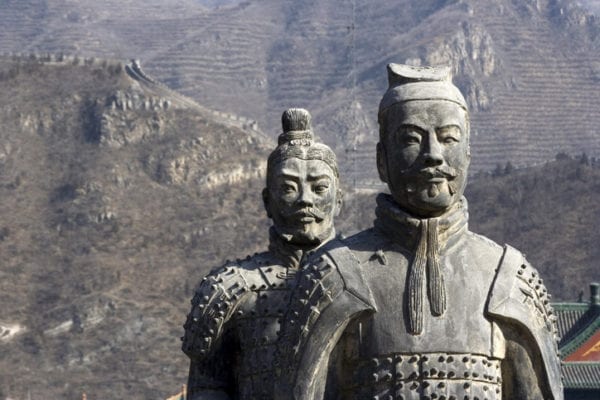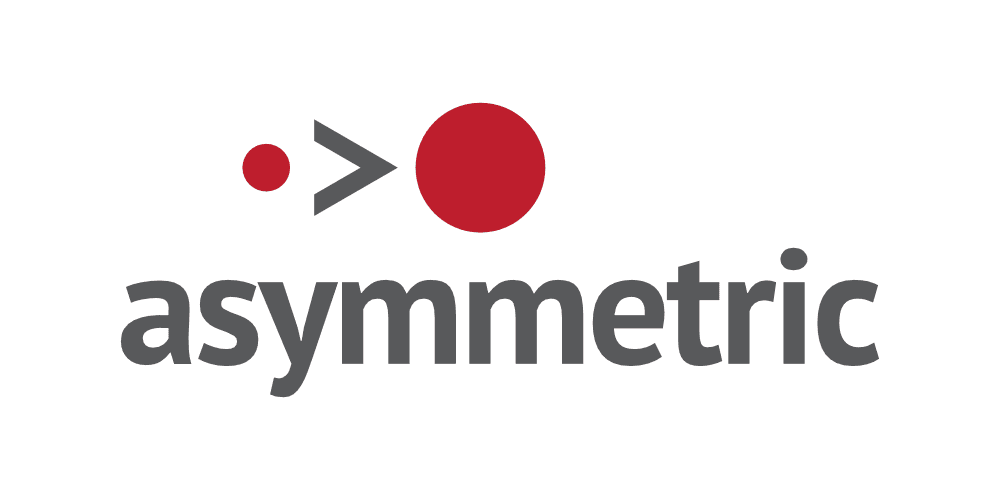What is guerrilla marketing?
Guerilla marketing is advertising directed toward a target audience that is not the intended market.
There are several forms of guerrilla marketing campaigns. Still, they all involve using unconventional or innovative methods to promote products and services through non-traditional channels, such as social media and word-of-mouth.
A guerrilla marketing campaign effectively allows small business owners to get their brand noticed in a crowded market. To execute a successful guerilla marketing campaign, it is crucial to test ideas, analyze campaign results, and promote the campaign online to maintain momentum and increase brand engagement.
It can also help them gain credibility and build trust with customers who might be hesitant about buying from a new business or are looking for something unusual.
The term guerrilla marketing refers to the tactics used by guerrillas in wartime, including armed civilians, who use surprise attacks on the enemy and sabotage. This concept is rooted in guerrilla warfare, which involves unconventional military tactics employed by irregular forces. Critical elements of guerrilla warfare include leadership, organization, and using terror as a tactic. The guerrilla marketing methods are similar: we often employ them for low cost and high profit.
Guerrilla marketing tactics use advertising that grabs attention quickly and effectively to gain exposure and build trust with potential customers.
This type of marketing can take many forms, from unconventional product placement to creative social media campaigns. Still, all involve innovative methods to promote products and services in unconventional ways.

Definition and History
Guerrilla marketing is a marketing strategy that uses unconventional and creative tactics to promote a product or service. Coined by Jay Conrad Levinson in his 1984 book “Guerrilla Marketing,” this approach has since become a popular method for businesses aiming to stand out in a crowded marketplace. The term “guerrilla marketing” draws inspiration from guerrilla warfare, where soldiers use surprise and ambush tactics to gain an advantage over more significant, traditional forces.
Similarly, in marketing, guerrilla tactics involve using unexpected and innovative methods to capture the target audience's attention. This strategy is particularly effective for small businesses and startups that may not have the budget for large-scale traditional marketing campaigns but still want to make a significant impact.
Guerrilla marketing examples
Businesses can use many marketing tactics to create interest in their products and services. One such tactic is guerrilla marketing, which involves using unconventional advertising methods to draw attention to a product or service.
One type of guerilla marketing is called a “flash mob.” In these events, people gather in public places to create the illusion that they spontaneously meet one another.
An individual or a group may organize these gatherings, and they occur with little or no planning.
Over time, businesses adopted guerrilla marketing tactics to quickly and effectively promote their brands. Today, many companies use guerrilla marketing strategies to generate excitement around new products and services, attract new customers, and build brand awareness.
Street marketing campaigns are another form of guerrilla marketing that utilizes unconventional advertising techniques in public spaces, such as fliers, posters, and art displays.
Some other guerrilla marketing examples include sidewalk graffiti campaigns, experiential marketing projects, guerrilla ads on public transport, guerrilla stunts, viral marketing, social media competitions, guerrilla giveaways, and pop-up shops.
While most guerrilla marketing campaigns can effectively promote your business, you must also consider their potential risks and legal implications.

It is essential to work with a trusted marketing team that understands how best to leverage advertising strategy and guerrilla tactics while staying compliant with local regulations and laws.
Whether you are looking to create a splash with guerrilla marketing or simply want to increase your brand’s visibility, there are many strategies you can use to achieve success.
You can effectively reach new customers and grow your business by creating exciting content that resonates with your target audience and engaging them using creative tactics.
Why is it Called Guerrilla Marketing?
Guerrilla marketing is aptly named because it mirrors guerrilla warfare's unconventional and creative tactics. Just as guerrilla fighters rely on surprise and ambush to outmaneuver larger, more conventional forces, guerrilla marketing employs unexpected and innovative methods to capture the target audience's attention.
The term “guerrilla” signifies using unconventional methods to achieve a goal rather than relying on traditional and predictable approaches. In marketing, this means using creative and often low-cost tactics to create a lasting impression and generate buzz around a product or service. By stepping away from the norm, guerrilla marketing aims to surprise and engage the audience in ways that traditional marketing strategies might not.
The definition of a guerrilla is “a member of a small independent group taking part in irregular fighting, typically against larger regular forces.” Another definition is “Referring to actions or activities performed impromptu, often without authorization.”
Guerrilla marketing uses unconventional marketing tactics to increase sales or generate attention. It compares the nature of guerrilla warfare to marketing.
The term ‘guerrilla war' originated in the early 19th century, describing an irregular type of warfare. It came into common usage in the late 1960s after Cuban revolutionary leader Fidel Castro invaded a sparsely populated area of Cuba with hundreds of soldiers, which led to his capture and eventual overthrow. The historical context of the guerrilla war, characterized by small, independent groups engaging in irregular fighting, parallels the unconventional and impromptu nature of guerrilla marketing.
Guerrilla warfare involves unconventional military tactics employed by irregular forces. Critical elements, such as leadership and organization, contribute to the effectiveness of these strategies.
So why is guerrilla marketing called “guerrilla”? The name likely stems from the fact that we often conduct these kinds of campaigns unplanned or guerrilla-like.
Guerrilla marketing is often used by smaller businesses or startups that lack the large budgets that more prominent companies have for traditional marketing campaigns.
Today, guerrilla marketing is the new way to market your business. It's a low-cost, high-impact marketing strategy that can increase sales and boost customer engagement.
What are the Principles of Guerrilla Marketing?
Guerrilla marketing is a guerrilla-style approach to marketing that emphasizes creativity and innovation over traditional methods like advertising and mass promotions.
Guerrilla Marketing is based on unconventional thinking, resourcefulness, flexibility, and experimentation. A successful guerrilla marketing tactic employs these principles.
We root in these principles because marketers should constantly test new tactics and strategies to achieve maximum results and break through the noise of traditional marketing channels.
Successful guerrilla marketing campaigns demonstrate effective, engaging, and innovative marketing strategies. Digital guerrilla marketing is accessible and affordable, making it an attractive business option. However, before implementation, it is crucial to consider brand alignment and previous successful campaign experiences.
Some common techniques used in guerrilla marketing include grassroots events and outreach efforts, guerilla billboards and signage placed in unexpected locations, guerrilla PR campaigns designed to generate media coverage and social media engagement, and influencer partnerships designed to reach targeted audiences with tailored messaging.
Overall, guerrilla marketers need to be creative and tap into the power of word-of-mouth marketing to create buzz and drive conversions. The essence of guerrilla marketing is its ability to embrace the unexpected to capture the market’s imagination.
Principles
Creates Surprise
A surprise results from an unexpected situation. This is when something occurs in a way that one or more participants were not expecting.

Using familiar objects in unusual places and times, you can catch people's attention. You can use unexpectedness to your advantage. People pay more attention when they are presented with a surprise situation.
Marketers may use this scenario to draw people to their site, especially on the Internet, and deliver a marketing message.
The possibility that an unexpected campaign may be seen as unfavorable by the target audience can make it challenging to employ guerrilla marketing effectively. As part of the AIDA model's Attention phase, the marketer must design the campaign to minimize the adverse effects of surprise.
Segmentation and targeted audience profiling are two of the most critical steps in building a guerrilla campaign that effectively uses the element of surprise.
Impactful
Oxford Dictionary defines “drastic” as having a strong, far-reaching effect.
Guerrilla marketing campaigns should include a touch of drama to reach the most relevant audience in an emotionally exciting manner.
Drama allows the marketer to reach large numbers of recipients without spending much on marketing.
This element can make a campaign cost-effective and provide high attention and interest. However, extreme behavior can lead to the target audience rejecting the message.
We can also interpret it as impolite or negatively affecting their values. So, it is critical to consider the negative aspects of employing highly dramatic and impactful guerrilla tactics.
Entertaining
Humorous marketing communications can help reduce the distance between sender and receiver—the business organization and customer. In addition, entertainment in marketing communications may increase campaign efficiency by reaching a larger audience.

Although achieving humor in marketing communication and promotion is challenging, many examples show that this effect is expected.
The humorous element distinguishes guerrilla marketing campaigns from more traditional marketing. Not all guerrilla marketing campaigns include humor or entertainment, but those that do reach more people and create more interest.
We often use humor in viral marketing campaigns distributed via the internet.
Short Duration
Guerrilla marketing campaigns are usually quite limited in time. This means that recipients of the message know that the guerrilla marketing campaign is temporary and may not be repeated in the same market.
This is a crucial aspect of guerrilla marketing online because many interactive tools and techniques can create long-term guerrilla campaigns that allow any consumer to view the campaign temporarily or even once.
Although the campaign may last several months, visitors will never see it again after seeing it for the first time.
Inexpensive
Guerilla marketing strategies can often be attractive because they are low-cost compared to other types of marketing. The goal is to generate buzz, rumors, and an immediate impact on the target group while keeping the budget tight.
The guerrilla marketing strategy must include creativity, innovation, and cost-saving processes.
The importance of creativity and innovation is evident. Cost-effectiveness and creativity are often the significant factors influencing marketing managers to use guerrilla marketing principles.
When comparing the cost-to-impact on target groups, a guerrilla marketing campaign's cost will usually be much lower than that of experiential marketing or other conventional campaigns.
Because of the large number of internet users and the technical accessibility of internet content, the impact of any guerrilla advertising campaign can be huge. The cost of a guerrilla campaign will depend on the targeted segments and the type of guerrilla marketing strategy.
Creates Goodwill
We define goodwill as the disposition to kindness and compassion or as an intangible asset providing a competitive advantage — such as a powerful brand, reputation, or high employee morale.
The most challenging aspect of marketing can be creating a clear customer benefit. For example, a customer may purchase a laptop from a shop for his benefit. Using the new laptop, he can work anywhere and communicate with anyone.
Guerrilla marketing examples like this show tangible benefits that can be easy to communicate and deliver. Still, the goodwill generated by a guerrilla campaign will be much more challenging to produce and disseminate.
Risks of guerrilla warfare tactics
While guerrilla marketing can effectively reach new customers and generate sales, it's important to remember that it has risks.

Guerrilla marketing campaigns can sometimes seem intrusive or even offensive if they're not executed carefully, so it's essential to consider your target audience and what type of messaging will resonate with them before launching a campaign.
Guerrilla marketing is inherently more unpredictable, so it's essential to understand your goals and ROI before moving forward.
Risk is inherent in any venture, so don't be intimidated. Embrace it, but understand and quantify it. Ensure that you build contingency plans and prepare for attacks on your weaknesses. A weakness is only a liability if you cannot defend against attacks from adversaries.
General
If you're looking for a fresh and innovative way to market your business, guerrilla marketing may be the right solution. By leveraging the power of unconventional thinking and guerrilla tactics, you can reach new customers and drive actual results in today's competitive landscape.
Be flexible, experiment with different ideas and channels, and always consider your target audience when planning your campaign strategy.
Types of Guerrilla Marketing
Guerrilla marketing encompasses various tactics and strategies, each designed to capture the audience’s attention in unique and memorable ways. Here are some of the most popular types:
Viral or Buzz Marketing
Viral or buzz marketing is guerrilla marketing that involves creating content or campaigns to be shared and spread quickly through social media and other online channels. Viral marketing aims to create a buzz or excitement around a product or service, encouraging people to share the content with their friends and followers.
Examples of viral marketing include creating funny or entertaining videos, launching social media contests or challenges, and using influencer marketing to reach a wider audience. By leveraging the power of social networks, viral marketing can amplify a brand’s message far beyond its initial reach.
Ambient Marketing
Ambient marketing is guerrilla marketing that involves using the environment or surroundings to promote a product or service. This can include outdoor advertising, such as billboards or posters, or creating interactive installations or displays in public spaces.
Ambient marketing aims to create a memorable and engaging experience for the target audience, encouraging people to interact with the brand in a more immersive and experiential way. By integrating the marketing message into the environment, ambient marketing can surprise and delight the audience, making the brand more memorable.
Experiential Marketing
Experiential marketing is guerrilla marketing that involves creating immersive and interactive experiences for the target audience. This can include hosting events or activations, creating pop-up shops or installations, or using virtual or augmented reality to create a more engaging and memorable experience.
The goal of experiential marketing is to create a lasting impression and encourage people to engage with the brand in a more meaningful and memorable way. By providing a hands-on experience, experiential marketing helps to build a deeper connection between the brand and its audience.
These are just a few examples of the many guerrilla marketing tactics and strategies businesses can use to promote their products or services. By using unconventional and creative methods, companies can stand out and create a lasting impression on their target audience.
Why is Guerrilla Marketing a Flawed Concept?
A guerilla marketing campaign is not always the best solution for every competitive challenge. While it can help boost brand recognition and credibility, it may not be ideal for companies that want to establish a consistent brand image or create long-term customer relationships.
If you are considering using guerilla marketing campaigns for your business, it’s essential to understand your audience's needs and values. Successful campaigns, like Red Bull's Stratos Jump, resonate deeply with audience interests rather than simply aiming for virality.
Guerrilla marketing is a great way to win competitive battles, but it won’t always work. Here are some examples of when guerrilla marketing won’t be enough to help you win:
- If your competitor has a better product or service than you do,
- If your competitor has a significantly bigger budget than you do,
- If your competitor has more staff than you do,
- If your rival is better known than you are,
In these cases, a guerilla marketing campaign may not be enough to help you win. You’ll need to find other ways to level the playing field and give yourself a chance to compete. Whether that means enlisting the help of influencers, investing in strategic partnerships, or simply working harder than your competition, there are many tactics you can use to give yourself an edge.
So, don’t count out guerilla marketing if facing a tough competitive battle. The right approach and mindset can be a powerful tool for helping you win. But remember that there may be times when guerilla marketing isn’t enough—and you’ll need to explore other strategies to succeed.
Commando vs. Guerrilla
A commando is a highly trained, specialized military unit that carries out covert operations and other dangerous missions.

In contrast, a guerrilla is a member of an irregular military force that uses guerrilla warfare, conducted by irregulars in small, fast-moving operations against traditional military forces. Guerrilla warfare involves unconventional military tactics, including ambushes, sabotage, and raids. Critical elements of guerrilla warfare include strong leadership, effective organization, and the use of terror to intimidate and demoralize the enemy.
Both commandos and guerrillas are skilled fighters who employ unconventional tactics to achieve their goals.
However, commandos tend to be highly trained specialists who operate within the framework of a larger military organization. In contrast, guerrillas are often members of disaffected groups operating independently from any larger political or military entity.
Commandos usually have access to better training, equipment, and resources than their guerrilla counterparts. Ultimately, commandos and guerrillas represent two distinct forms of warfare that require very different training and skills.
Commando
Commandos are highly trained specialists who operate within the framework of a larger military organization. In contrast, guerrillas are often members of disaffected groups operating independently from any larger political or military entity.
- highly trained
- specialized military unit
- covert operations
- dangerous missions
- sophisticated equipment
Commandos usually have access to better training, equipment, and resources than their guerrilla counterparts.
Guerrilla
While commandos are highly trained military specialists, guerrillas are typically members of less conventional fighting forces. Guerrilla warfare involves unconventional military tactics employed by irregular troops. It includes critical elements such as leadership, organization, and the use of terror. Guerrillas often fight against more significant and conventional forces, usually with second-hand or irregular equipment and limited training.
Commandos use guerrilla tactics and operate independently from larger military or political entities, while guerrillas often lack access to the same level of advanced training and resources as commandos.
Ultimately, commandos and guerrillas represent two distinct approaches to warfare that require unique skills and capabilities.
What is commando marketing?
Commando marketing was invented by Asymmetric Marketing LLC, a global marketing agency specializing in competitive strategy and asymmetric marketing.

Asymmetric believes businesses need guerrilla marketing strategies and tactics, but we should execute them with sophistication, discipline, and excellent tools.
These guerrilla marketing campaigns should be executed by intelligent, motivated, and well-trained professionals who understand the concepts espoused by guerrilla marketing.
Principles of commando marketing
Surprise
The element of surprise is crucial to the success of small-unit tactics. Since commandos operate in hostile environments, often with little direct support, they must maintain a clandestine profile. Commandos execute at the time and place best suited to them and their mission and do not operate predictably.
Concepts like security, the economy of force, and deception are all force multipliers for the well-trained commando unit.
Speed
Once a guerrilla marketing campaign begins, it must be executed with precision, discipline, and speed. Momentum is critical to successful competitive activity, and speed enhances momentum.
It is essential to wait until the most opportune moment to execute a campaign, but speed is a critical element of success once it starts.
Aggressiveness
Boldness, energy, and focused power are essential to winning in an environment where you are the underdog. Since you are not fighting a “fair fight,” it is crucial to execute boldly and energetically.
Much like speed and momentum, aggressiveness ensures that progress is maintained, allowing the campaign and mission to succeed with the minimum cost and use of valuable resources.
Planning
Louis Pasteur said, “Luck favors the prepared mind.“
Commandos relentlessly prepare for every mission, rehearsing the primary and contingency plans. These contingency plans must be done if the primary plan can't be executed as expected.
Business wargames are an excellent tool for planning and preparing for contingencies. These war game sessions allow you to prepare efficiently for competitive situations that can be fatal to the mission if not well considered.
The Power of Asymmetry in Marketing
Since ancient times, humans have been attracted to things that differ from themselves. For example, we may prefer to wear more colorful clothes or patterns than our own. In the same way, asymmetrical designs can be an excellent tool for increasing sales and making your brand stand out in the crowd of competitors.

Asymmetry is a powerful marketing tool. Its power comes from its ability to appeal to our unconscious minds. When we see an object designed asymmetrically, we are drawn to it and want it more than the symmetrical version of the same product.
The power of asymmetric marketing is now typical, but some marketers are still reluctant to embrace it. This can be because we have overlooked asymmetry in marketing for so long. However, this could not be further from the truth.
It's no wonder that asymmetry is used so often to attract attention. The average human can distinguish between different shapes and forms as soon as they are born.
There are many types of asymmetry to consider:
Information Asymmetry
Information is a fundamental component of preparation. Before we embark upon any business activity, the organization should ground itself in a basic set of insights. These insights inform the company about the market, the competition, the regulatory environment, the economy, and many other exigent factors.
Competitive intelligence is a specialized form of information that gains as complete a picture as possible of the various players in any market environment. Thinking through how each of these market participants will act and react is essential to the success of the guerrilla marketing campaign.
Resource Asymmetry
In most cases, the smaller competitor has significantly fewer resources—less capital, less brand equity, fewer people—less of everything that matters.
Much like in the story of David and Goliath, the underdog needs to access an asymmetric tool, asset, idea, or material to gain an edge and, thus, level the playing field.
Leverage
Archimedes said, “Give me a lever long enough and a fulcrum on which to place it, and I shall move the world.“
Leverage is the ability to use tools to use something to maximum advantage. For example, in guerrilla marketing, it is possible to create an event that is so unexpected that it “goes viral.”
In this guerrilla marketing example, a relatively small amount of time, money, and energy is used to create something seen by thousands (or even millions) of potential customers.
Many other guerrilla marketing programs and tactics, such as ambush marketing, ambient marketing, street marketing, and grassroots campaigns, can all give you the leverage you need to gain an edge.
Train your marketing team to create highly effective campaigns combining conventional digital and guerrilla marketing. Research marketing examples on the Internet to better understand how guerrilla marketing works.
Physics provides an exciting perspective on leverage. Tools like the block and tackle, the screw, the lever and fulcrum, and other uses of the physical use of leverage can all help to illustrate the power available to us if we can employ these principles in our marketing strategies and tactics.
Conclusion
While guerrilla marketing is a potentially interesting approach to getting outsized results with a few resources, the idea can be improved by thinking about similar outcomes using commando marketing principles. Who wants to be known for being a poorly trained, poorly equipped, poorly led, and poorly compensated marketer? Don't we all want to be elite, well-trained, well-equipped, and highly motivated?
Sun Tzu, the ancient Chinese warrior general, wrote an influential book, The Art of War. This book has become a marketing and strategy treatise for the military, competitive sports, and business organizations. The perennial question has always been, "These seem like good ideas, but how do I use The Art of War in my business?"

One way to become better versed in competitive strategy and guerrilla marketing concepts is to study The Art of War to learn these critical principles and philosophies. Generations of MBA students have read The Art of War, and we often cite it as one of the best-selling business and strategy books of all time.
Jay Conrad Levinson wrote the seminal (and eponymous) book on guerrilla marketing in 1984. While somewhat dated by emerging technology and advancing markets, this book offers many ideas, tactics, and principles for creating guerrilla marketing strategies and campaigns.
The original book has spawned a plethora of additional editions on guerrilla advertising, guerrilla publicity, guerrilla marketing for job hunters, and many more. While the guerrilla marketing franchise has some frayed edges in today's technologically complex world, there are still things to be learned from the original book.
Use These Commando Marketing Concepts to Grow Your Business
Use Commando Marketing principles to execute guerrilla marketing strategies and tactics to grow your business. We all know that business isn't fair — one side always has an advantage. However, the underdog can win if asymmetric strategies, processes, tools, and principles are employed to gain the leverage necessary to level the playing field.
Success isn't just about luck; it's about being prepared. Take your business to the next level with strategic insights and a proactive approach.
Frequently Asked Questions (FAQ) About Guerrilla Marketing
What is guerrilla marketing, and why is it popular?
Guerrilla marketing is an unconventional strategy focusing on low-cost, creative tactics to generate buzz and capture attention. It’s popular because it often requires minimal financial investment but can create significant brand awareness through clever, memorable campaigns that break through the noise.
Why doesn’t guerrilla marketing work for every business?
While guerrilla marketing can be highly effective for some brands, it’s not always a one-size-fits-all approach. It tends to work best for companies that can afford to take risks and stand out in a big way; for businesses in more conservative industries or those targeting a specific customer base, guerrilla marketing may not resonate as intended or even harm the brand’s credibility.
When is guerrilla marketing most likely to fail?
Guerrilla marketing can fail when it doesn’t align with your brand’s values or your target audience's expectations. It may also miss the mark if the creative execution is misunderstood, poorly timed, or fails to gain traction. Additionally, if a campaign generates more controversy than positive buzz, it could negatively impact the brand.
What are the risks of guerrilla marketing?
The main risks include misinterpretation, legal challenges, and backlash from the public or authorities. Because guerrilla marketing often pushes boundaries, there’s a fine line between a successful campaign and one that can lead to negative attention. It’s also important to consider the long-term effects—while a guerrilla campaign might create short-term buzz, it may not drive sustainable growth.
What alternatives should businesses consider if guerrilla marketing isn’t a good fit?
If guerrilla marketing seems too risky or off-brand, consider other marketing strategies like content marketing, inbound marketing, or targeted digital campaigns. These approaches can provide more predictable, measurable results while engaging your audience creatively and effectively.
Can guerrilla marketing work for small businesses?
Yes, guerrilla marketing can work for small businesses, especially those with limited marketing budgets. However, it is essential to ensure that the campaign aligns with the brand’s values and target audience. Small businesses can benefit from guerrilla tactics by leveraging local events, street marketing, or social media stunts to create a buzz without significant financial investment. However, weighing the potential risks and rewards before jumping in is essential.
How do you measure the success of a guerrilla marketing campaign?
Measuring success in guerrilla marketing can be more challenging than traditional marketing, but it’s not impossible. Key indicators of success include increased brand awareness, social media engagement, and press coverage. You can also track website traffic, customer inquiries, and sales during and after the campaign to evaluate its impact. For guerrilla marketing to succeed, it should generate lasting engagement with your audience, not just a temporary burst of attention.
How do you decide if guerrilla marketing is suitable for your brand?
Guerrilla marketing is a good fit for your brand, depending on its risk tolerance, audience preferences, and long-term goals. Brands that thrive on creativity, boldness, and engagement with younger, trend-savvy consumers may find guerrilla tactics particularly effective. However, if your audience expects a more traditional or professional approach, guerrilla marketing might not align with their expectations. Evaluating your brand’s identity and the potential impact on your reputation is crucial before moving forward with a campaign.

Ready to Rethink Your Guerrilla Marketing Strategy?
Guerrilla marketing might not be the best fit for every business, but plenty of other ways exist to make a big impact without taking significant risks. Whether you want to refine your current approach or explore alternative strategies, we’re here to help.
Explore Your Options
Want to discover marketing tactics tailored to your business? Click here to schedule a free consultation. Let’s work together to build a strategy that drives actual results.
Learn More
Check out more insights on innovative marketing strategies and how they can align with your business goals. Read our latest articles.
Get Expert Guidance
We're just a click away if you need personalized advice on which marketing approach best suits your business. Contact us today and take the first step toward a more effective marketing plan!
About the author
Mark A. Hope is the co-founder and Partner at Asymmetric Marketing, an innovative agency dedicated to creating high-performance sales and marketing systems, campaigns, processes, and strategies tailored for small businesses. With extensive experience spanning various industries, Asymmetric Marketing excels in delivering customized solutions that drive growth and success. If you’re looking to implement the strategies discussed in this article or need expert guidance on enhancing your marketing efforts, Mark is here to help. Contact him at 608-410-4450 or via email at mark.hope@asymmetric.pro.

